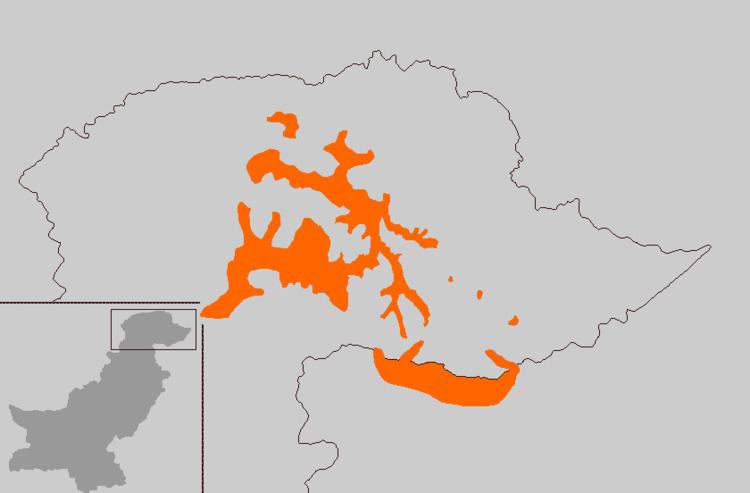Pakistan 2,084,673 (in 2004) | India 185,720 | |
 | ||
The Shina are the Dardic, pre-Islamic tribe originating in southern Gilgit–Baltistan, Chitral and western part of Kohistan district in Khyber Pakhtunkhwa province of Pakistan, as well as Dras Valley and Gurais/ Kishenganga Valley region in northern Kashmir of India. They also live in some parts of Pakistani Kashmir. They speak an Indo-Aryan language, called Shina language, with varied dialects. Some Shina speak Brokskat.
Contents
Shina people are found in Shinkari (the part of the Indus Valley below Gor to the Pak-Afghan border near Ghorband), Gor, Chilas, Tangir, the Indus Valley below Sazin, and the upper part of the Gilgit Valley above Ponyal.
History
In the 4th century, the Greek historian Herodotus described an ethnic group who spoke the Brokpa language and lived on the Deosai Plateau of Gilgit-Baltistan.
Pre-Islamic Hindu Shin names
Shin Names Men
Shin Names Women
Festivals
Chili marks commencement of wheat sowing which is similar to wheat sowing celebrations all over the Indian subcontinent with different names like Lohri and Makar Sakranti. Chilli also had years ago a further connection with the worship of the Cedar, now in the main dropped.
Ceder worship is prevalent among all historic Hindu communities of Himalayas from Hindu Kush region to Himachal and Uttarakhand. It is known as Deodar derived from Sanskrit word Devadaru, which means "wood of the gods", a compound of deva (god) and dāru (wood, etym. tree). The Cedar is also sacred in Kafiristan. Like the one described above. The Drassi Dards also celebrate chilli ceremony, lomay, nisalo. The people of Gilgit Baltistan,chilas are celebrate, ″—— spring fastivel, summer fastivel,
